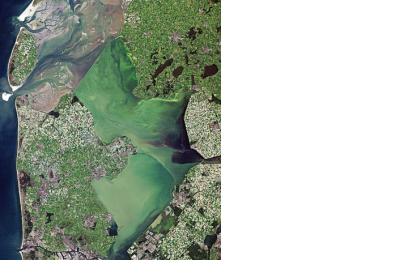In the Netherlands, local authorities are looking to satellite observations as a promising option for dike monitoring and to protect against dike failures. In a recently completed Terrafirma study, the IJsselmeer dikes were checked using radar data from ESA's Envisat satellite for the period 2003–10. Results show that a large stretch of the dike near the town of Medemblik is subsiding up to 5 mm per year.
To track movement, scientists use Synthetic Aperture Radar Interferometry (InSAR) – a remote sensing technique where two or more radar images over the same area are combined to detect surface changes occurring between acquisitions. This provides deformation data at centimetre precision. In a more recent way of processing satellite radar images called Persistent Scatterer Interferometry (PSI), movements over wide areas can be detected and monitored with even greater sensitivity.
The study was just the first step in a project that combines satellite data, information on subsurface structure and the knowledge of dike managers for the early detection of weak spots in dikes. In 2013, ESA plans to launch the first satellite of the Sentinel missions. Owing to the Sentinels’ high revisit rate over the Netherlands, more data will be available on the dikes. The satellites are planned to make several passes over the dikes each week. After every series of passes, new products can be produced on the dikes’ status, helping managers to decide where additional inspections are needed, or where maintenance has the highest priority.

